This post has been moved to OpenChutes.com. All future postings of Powwows, Indian Relay Races, Rodeos and Rendezvous will be posted there from now on exclusively. So if you’re looking for new images and posts for all those events attended this year, plus all the old posts posted on BigShotsNow.com check out OpenChutes.com. See you there!
The North American Indian Days is an annual event held on the Blackfeet Indian reservation usually in July and is billed as one of the biggest tribal get-togethers in North America. They say North American instead of the Unites States because some of the participants are from tribes that live in Canada. It lasts for about a week, four days according to the advertisements, but everybody’s there early and leaves late so plan on at least five or six days if you want the full experience.
Rodeo plays a huge part in the festivities at the North American Indian Days. There are events for everyone and they provide a chance for the contestants to show off their skills in front of an audience of their peers. Winning a pot full of money for being the best in their event doesn’t hurt either. There are numerous events and many contestants in each one so we’re going to present an overview of the rodeo. Some of the highlights of each event and some of the atmosphere that makes going to the Rodeo such an exciting experience. In the shot above you see that everyone doesn’t walk away a winner. At least not this time. But there’s always the next event and the outcome can be completely different. This is a longer post than usual because there is so much to take in. Read it at your leisure or just look at the pictures. Both work. As always click on an image to see a larger version.
As in all events the rodeo is opened with presenting the flag and paying tribute to our great country. Because there were such a large number of Indian participants and visitors present from Canada they proudly displayed their flag with ours.
The first event was Barrel riding where the rider enters the ring and rides a pattern around three barrels. The horse and rider have to act as one and you can see the effort and concentration by both in this shot.
Rodeo is a family sport. Each member has an event they participate in. Here a dad is showing his son how to do it. The youngster is only three years old. Rodeo starts early.
Whenever you deal with steers or bulls you are tempting the fates. The rodeo actually started in the chute before the door got opened and consequently the participants both human and animal, tumbled out into the arena. This is not an opportune way to begin your ride.
Here the bull had divested itself of its rider and was celebrating. In speaking with the rodeo clown later he was asked what his plan was in running in under the bull like that. His reply was that he thought he could catch the bulls hind legs while they were in the air and hold him up while he wheelbarrowed him over to the catch pen. Unfortunately that did not work out. The clown is still alive though and already working up new ideas for the next event.
In the team roping event the plan is for one roper called a header to get a rope around the calf’s head and the other roper called a heeler to get one around the calves back legs thereby immobilizing the calf so it could be branded. This time the heeler or back leg catcher got his rope around only one leg instead of both. Still counts but with a ten second penalty added to their score.
This event is called the Tie down or break away event. The end of the rope used to catch the calf is tied to the saddle horn with a piece of string and the rider ropes the calf. The horse immediately stops and when the calf runs out far enough it breaks the string and time is called. Fast, fun event.
Here we see “How to Catch a Cowboy”. The trick is to convince the cowboy to hop like a rabbit, while the cowgirl acts as a heeler and ropes his feet while he’s in the air. When she catches him, he’s quickly hog-tied and, well, caught. What happens from that point on was not displayed. This was not an official sanctioned event, but we were told it goes on all the time.
Bareback bronc riding is the event that started rodeo. Everything else evolved from this event. It’s pretty simple, you climb on the horses back and ride. He tries to throw you off. Eight seconds pass and if you’re still on the horses back you wins. If not, there’s always next time.
The horse will attempt all manner of things to dislodge the rider. He’s a coiled spring ready to explode.
Steer wrestling is when a big cowboy deliberately jumps off his horse to catch a steer and wrestle it to the ground. This event always looks like a mistake that grew into a huge exciting event. It’s serious though and one of the more dangerous interpersonal contact sports there is in rodeo.
However when it goes wrong, like here when the calf went another way just as the cowboy leapt from his speeding horse to bulldog it, you see that it terribly unforgiving of any error.
Besides losing your horse, the face plant in the dirt and the resulting mouthful of arena soil just adds insult to injury.
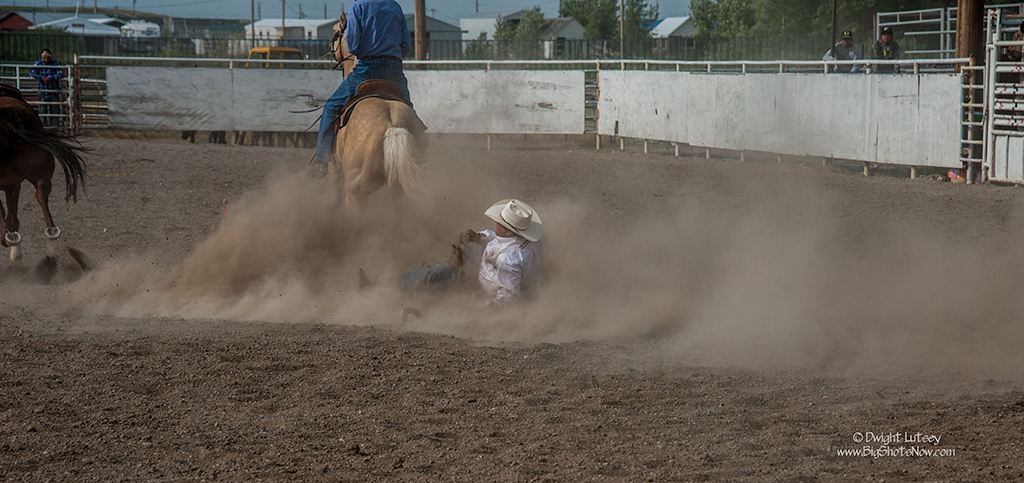 The amazing thing and the proof that you are watching truly exceptional cowboys is he never lost his hat.
The amazing thing and the proof that you are watching truly exceptional cowboys is he never lost his hat.
The storyteller. All around the arena you will find spectators sitting on the fence watching the action and talking. And as it has always been there is one that can mesmerize his fellows with stories of amazing adventure and incredible action. HIs rapt audience hangs on every word. This is one of those storytellers.
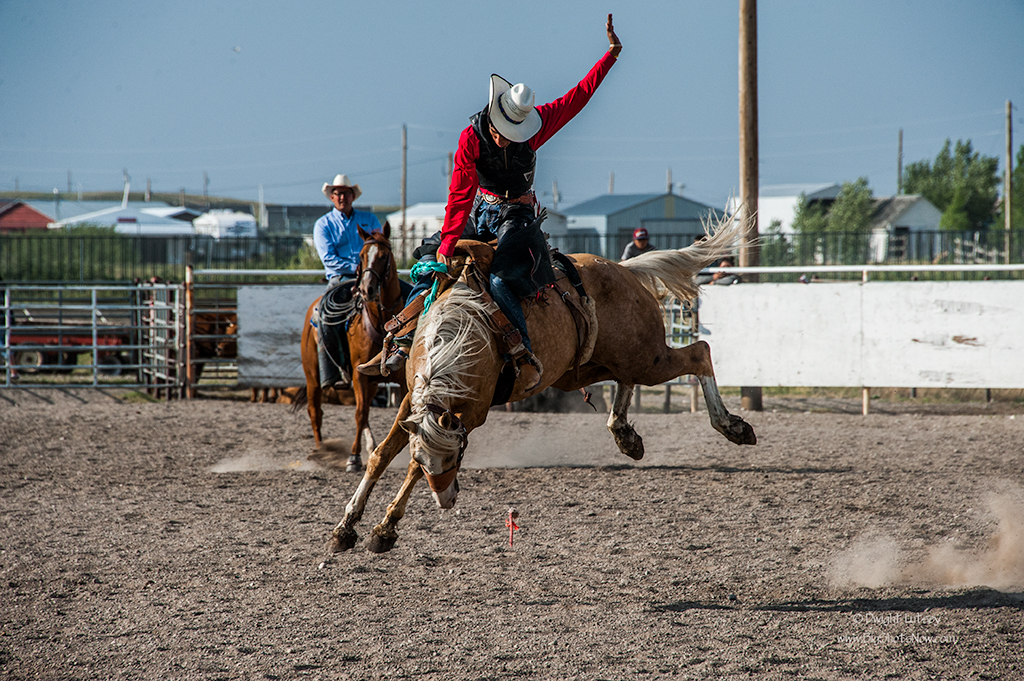 Saddle bronc riding is just like bareback riding except you use a saddle. Still just as exciting.
Saddle bronc riding is just like bareback riding except you use a saddle. Still just as exciting.
These are the pickup men. They’re out in the arena to catch the cowboy off the back of bucking horses after the ride is over, catch and return the riderless horses to the catch pen, and generally do the work that needs to be done to keep the events moving steadily through the rodeo. It’s not a simple task and there is often a lot of action right up against the fence as things unfold. Besides the rodeo clowns these men are the unsung heroes of the rodeo.
They are also the ones that handle the unruly bulls and other bucking stock. They need to be experienced, unflappable men and they are.
Here’s another event straight out of the history books of ranch work. The calf roping. A calf is released, the cowboys chases it down, ropes it and he gets off his horse while it backs up holding the calf steady.
 He quickly reaches the calf, ties all four feet together immobilizing it so it can be branded.
He quickly reaches the calf, ties all four feet together immobilizing it so it can be branded.
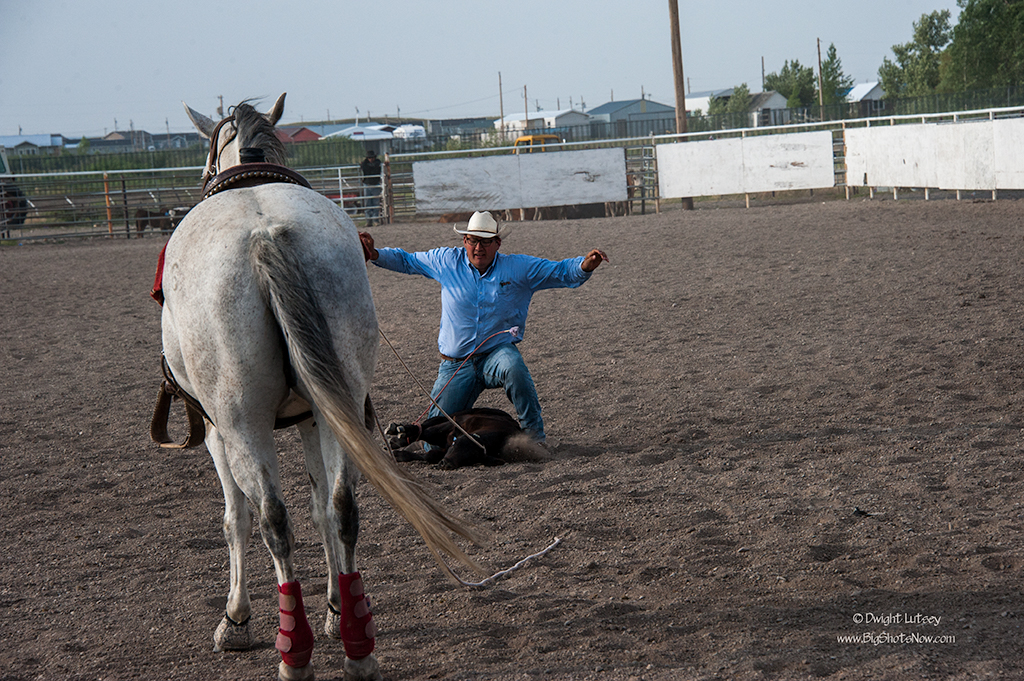 As soon as he’s finished you see his arms come up and time is called. The cowboy and horse work as a team and the better the teamwork the shorter the time.
As soon as he’s finished you see his arms come up and time is called. The cowboy and horse work as a team and the better the teamwork the shorter the time.
Normally the last event on the schedule is bull riding. It’s last because it is the most exciting and the one everyone wants to see. This is the event that puts the show business in rodeo. There is very little need for a bull to be ridden in normal ranch work. You’re not going to break them to ride, or to pull a buggy to town. When a cowboy crawls on the back of a bull it for one reason and one reason only. To see if he can do it, can he ride this monster beast for eight seconds without getting killed or maimed. It is a test of courage. And people love to see it.
Many times the whole event is over before the bull clears the chute. But even if the event lasts for only a second or two it is packed to the brim with unbridled excitement. Enough so that entire events are held showcasing bull riding only. Lots of Ace bandages and liniment are sold at these events.
The rodeo is held several nights during the North American Indian days and it’s a new show every night. It’s an experience you won’t soon forget.

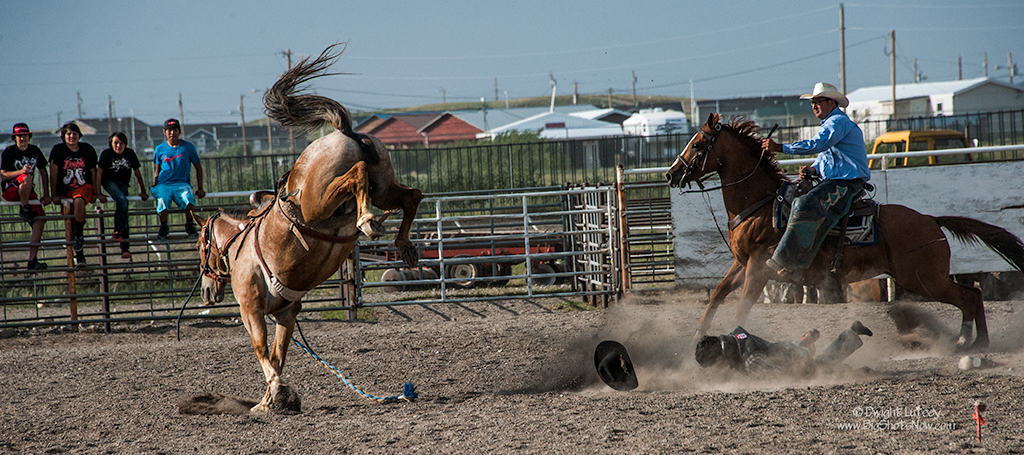
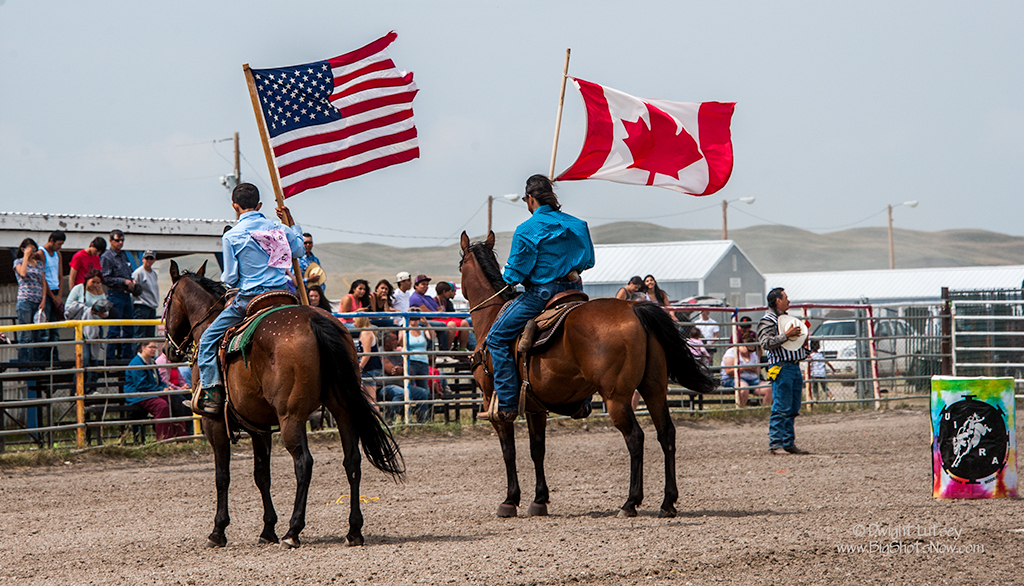

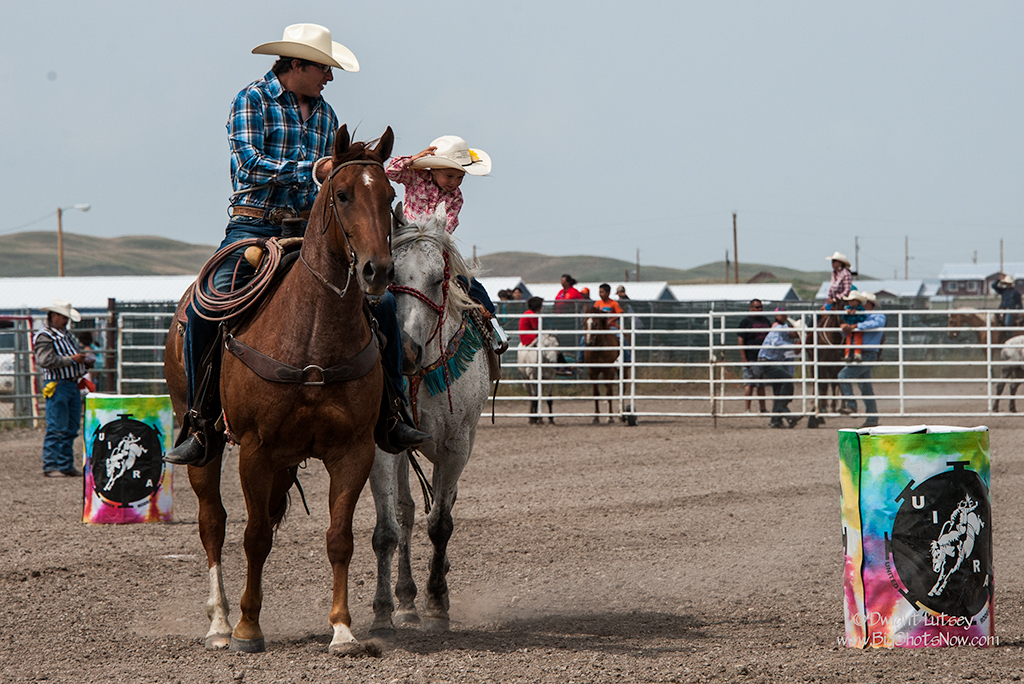
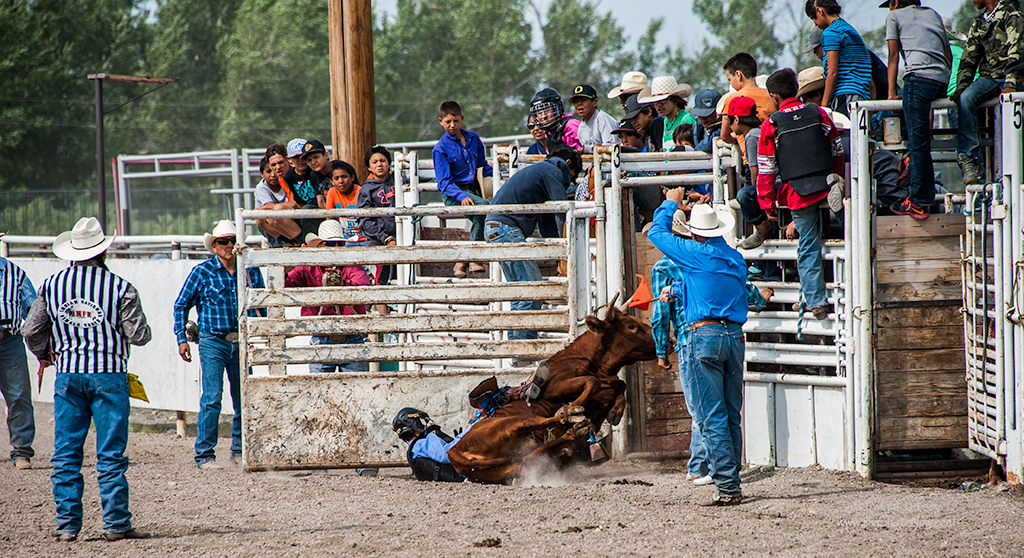
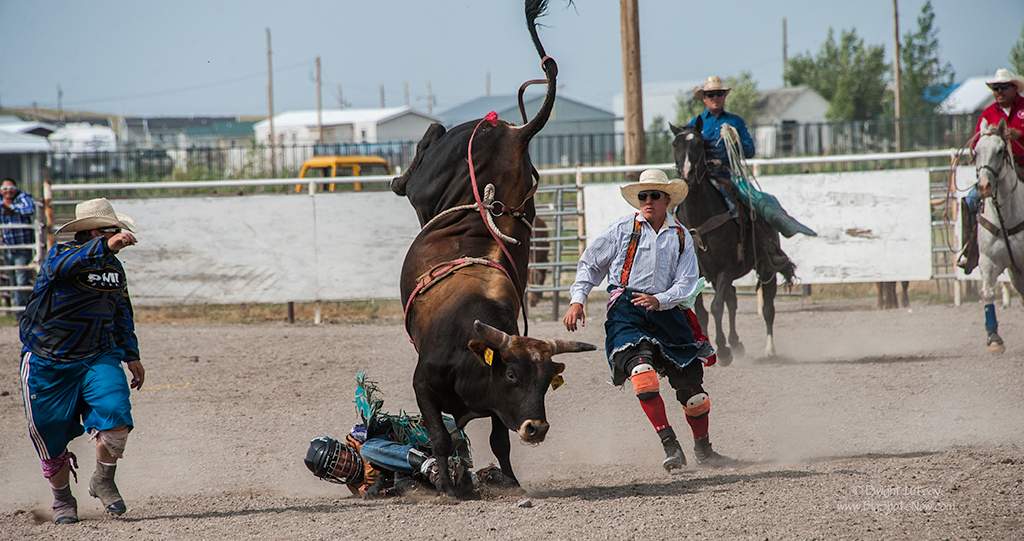

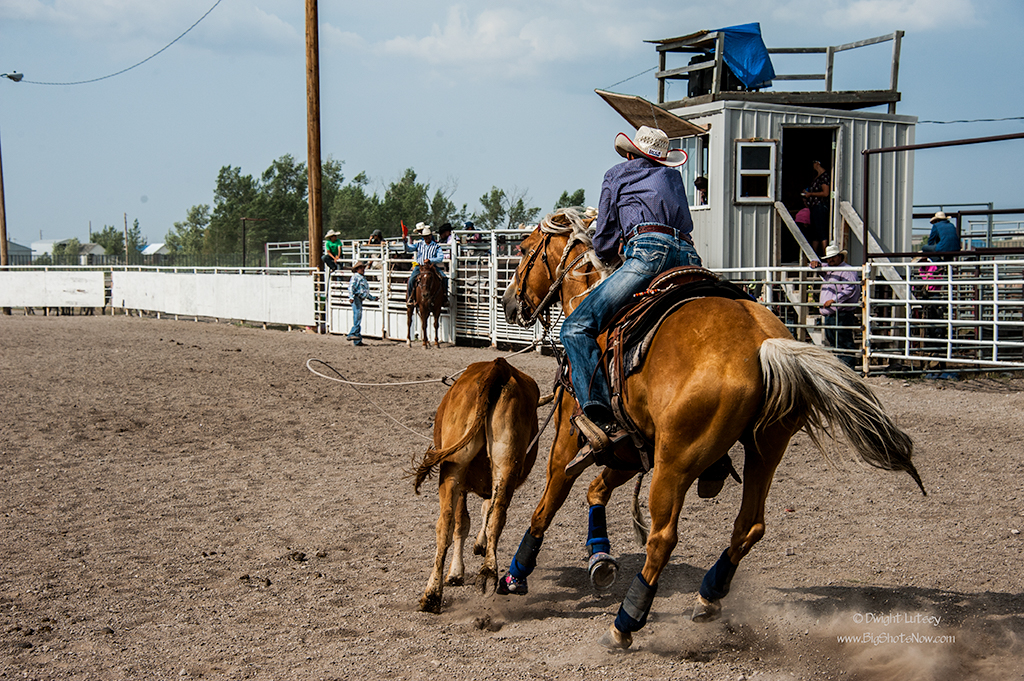



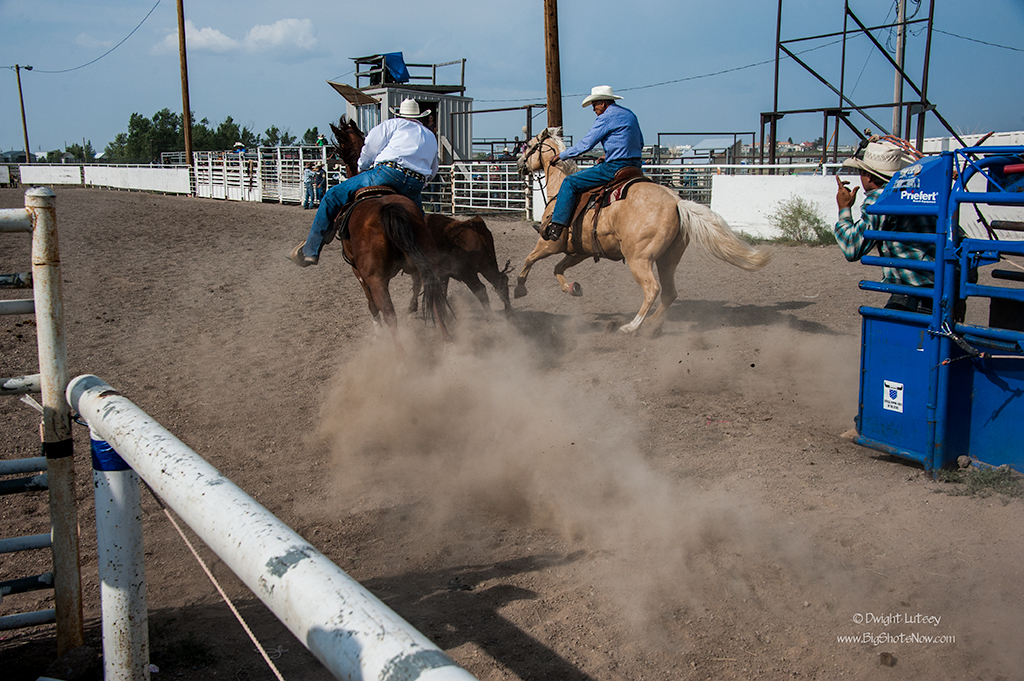
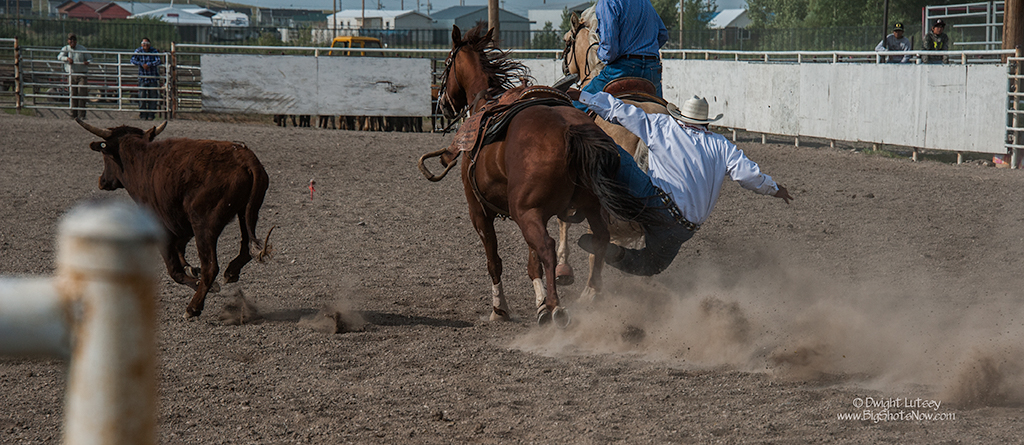


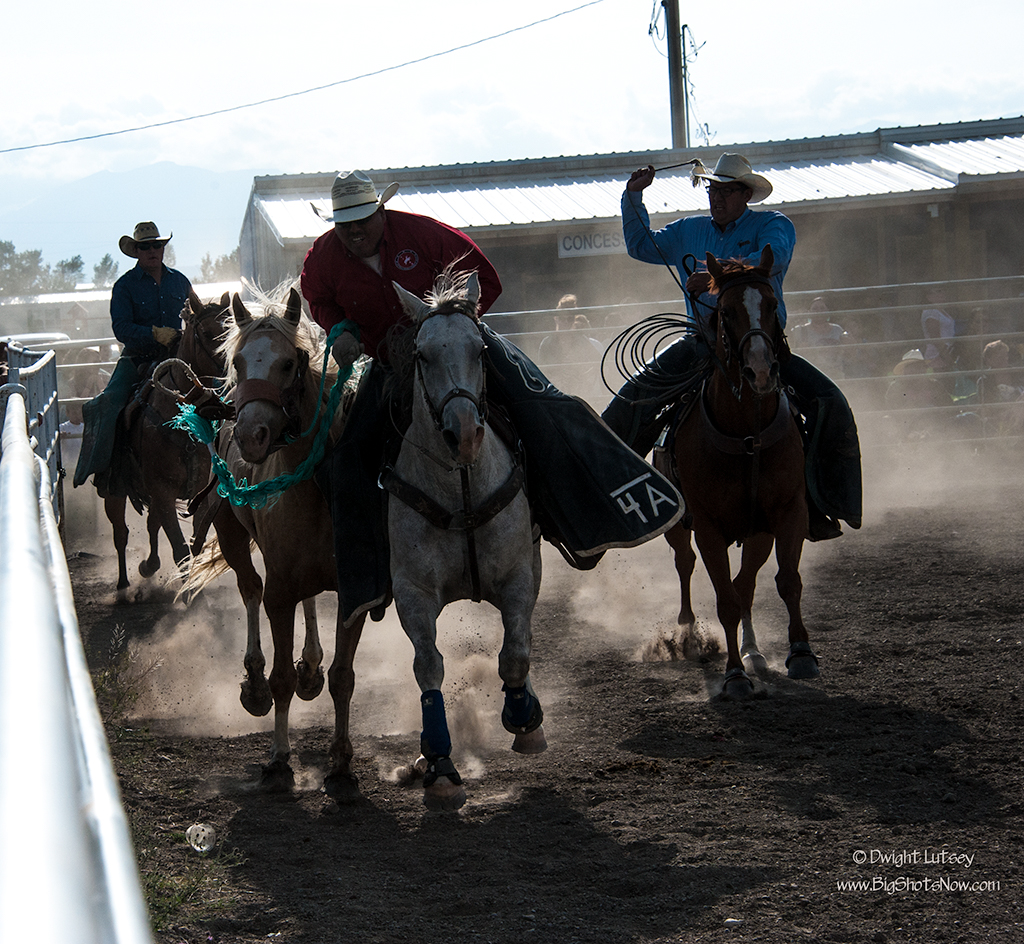
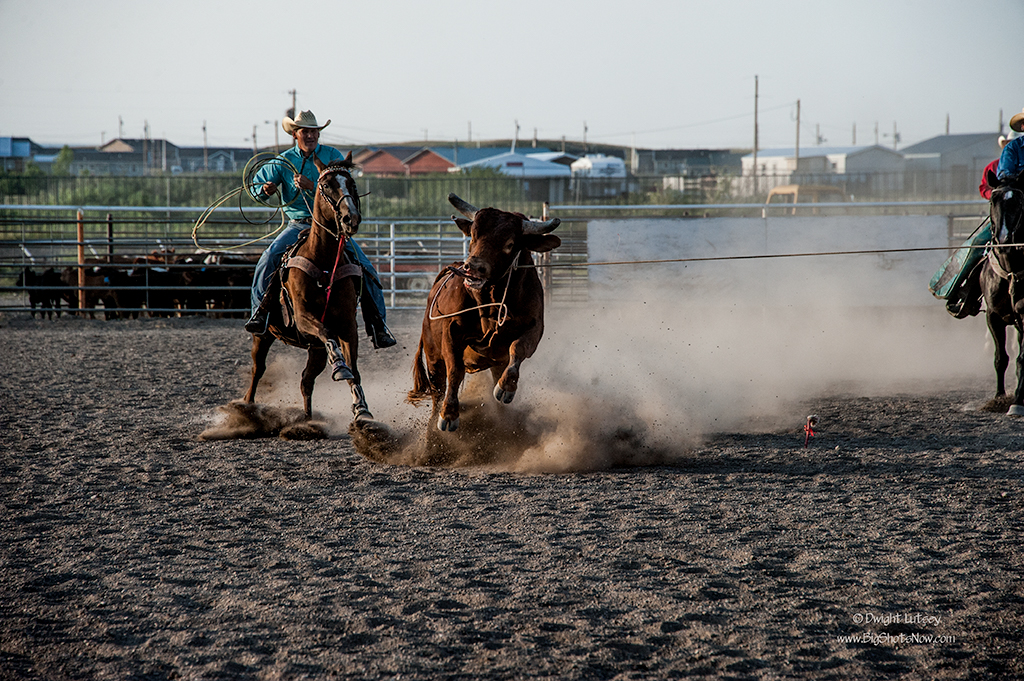
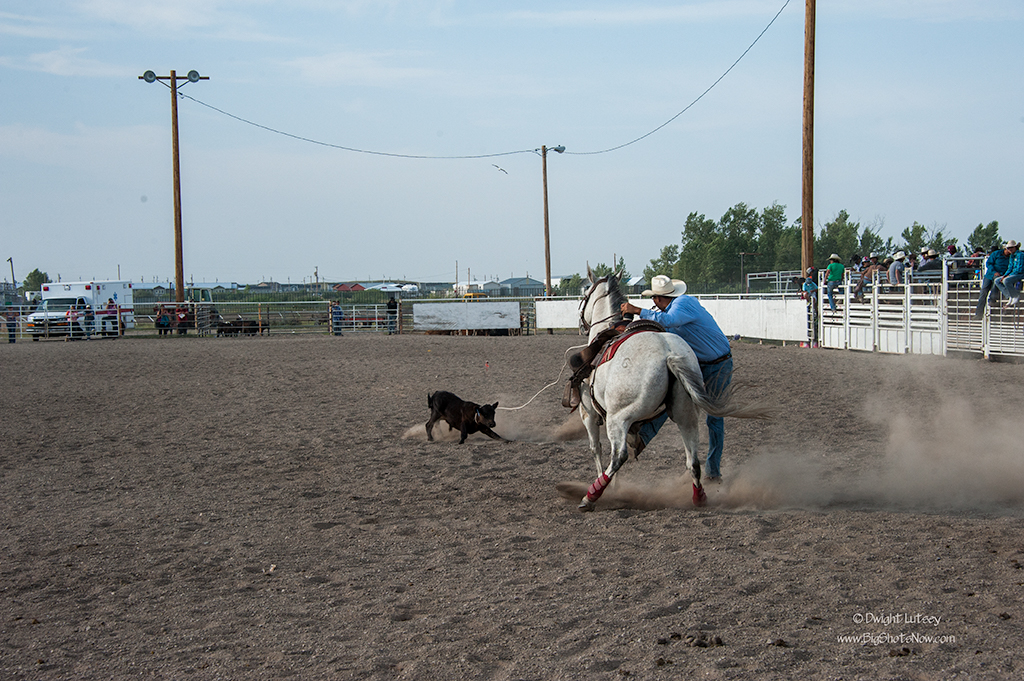

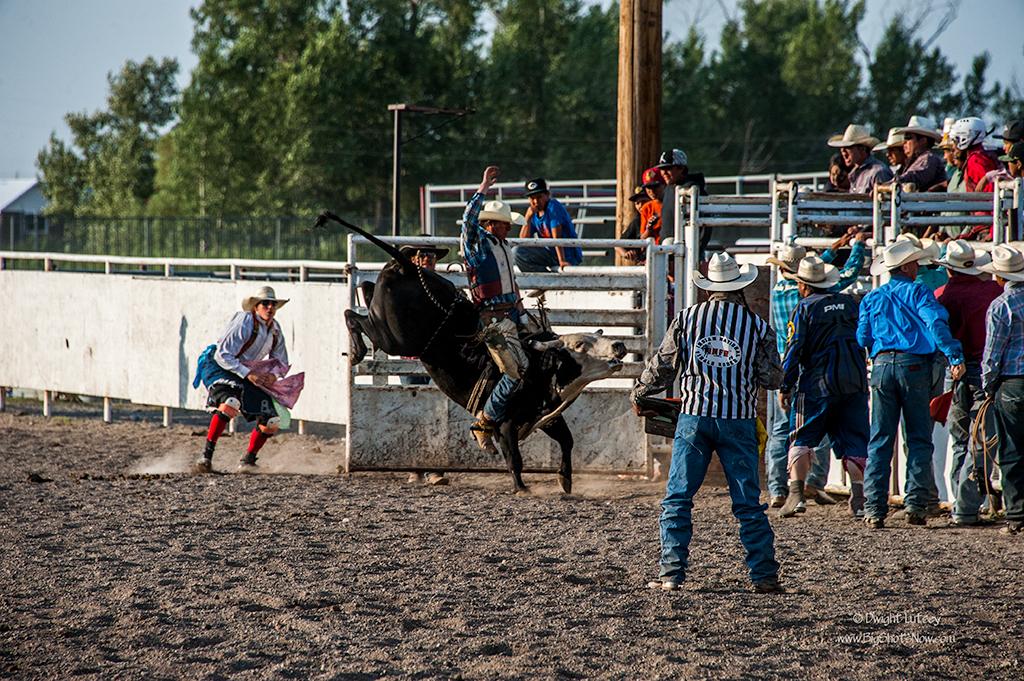
You must be logged in to post a comment.